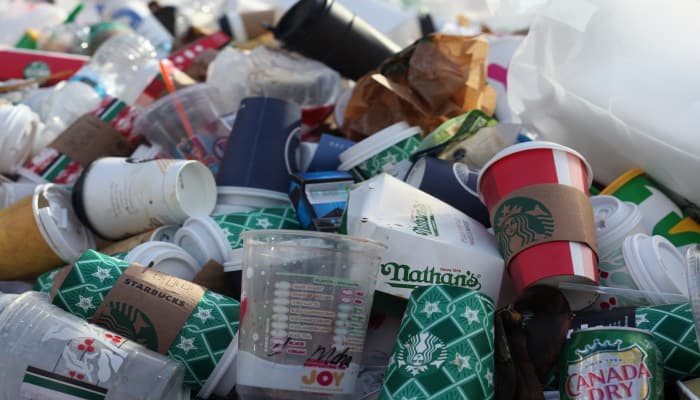A restaurant health inspection looks into the way your restaurant and the workers who work there handle and prepare food. All food products should be handled according to local and state health regulations to protect the public. These inspections typically happen every six months, but if the food inspector receives a complaint from a customer, they are obligated to carry out another inspection. Restaurant inspections can be daunting, but if you prepare in advance and follow the steps outlined below, you can approach your next restaurant inspection with the confidence of knowing that it will go well.
1. Examine how you handle your waste.

American restaurants are responsible for producing 33 billion pounds of wasted food each year. An additional 10% of the food that is purchased by restaurants is already wasted before it arrives at the customer’s table. The reason for this is that restaurants tend to overserve side dish portions such as french fries and salads and these typically go uneaten.
Most times, these portions go eight times over the stipulated FDA and USDA standard servings. Further to this, Cornell University’s Food and Brand Lab found that most diners leave 17 percent of their food uneaten and that 55 percent of edible leftovers are left in the restaurant.
Other causes of restaurant waste are preparing too much food, storing ingredients incorrectly, and having too many food options on the menu. Buffets also contribute to restaurant food wastage as food health restrictions make it unlawful to donate or reuse leftovers/extra food. Furthermore, ensuring that these buffet food items remain well supplied throughout the day, rather than allowing for the food items to deplete the closer you get to closing time also contributes to this waste.
To make sure that your restaurant does not fall victim to poor waste management, make sure that all your wastebins have tight-fitting lids (which should remain closed). They should be placed in areas where the scraps are generated and should also be pest-proof and leak-proof. What’s more, learn how to dispose of used cooking oil according to stipulated guidelines.
If you can learn to reduce and manage food waste in your restaurant, not only will the environment be better for it, but you will also be well prepared for an impromptu restaurant inspection and save your restaurant money in the process.
2. Assess your restaurant’s water hygiene practices.

Water is an essential resource in the foodservice industry, and for a restaurant to successfully provide safe food, there must be a clean and constant supply of clean and uncontaminated (potable) water. Potable water is water that is safe to drink. In the restaurant industry, potable water is also used for washing vegetables and fruits, cleaning kitchen appliances, handwashing, cleaning food prep stations, and as an ingredient.
If you use unclean water for any of these tasks, a restaurant inspector is going to pick up on how this compromises the safety of your food. Furthermore, restaurants need about 7,000 gallons of water a day to run effectively. Knowing this, you may need to ensure that you have a reliable water delivery supplier working with you, to ensure that your foodservice operations are seamless and sanitary.
3. Keep good operational records.

One of the signs of a successful company is keeping good operational records. Some of the records that you may be required to keep include previous food safety inspection reports, your pest control records, and equipment servicing, maintenance, and repair records.
Other important documents include self-inspection records, all food safety training and procedures such as HACCP Hazard analysis and critical control points, and your financial plans. Most restaurants keep a daily record of stock and generated sales, the value of inventory, sales made, orders, and payroll. While keeping good books is important, also make sure that you have a valid operator permit and liquor license.
Most banks are conservative and may be wary of lending to a start-up, due to the high risk involved. Knowing this, restaurant owners sometimes use franchise lenders to finance their restaurants. Franchise loans allow the franchisee to sell a product and also provide a service. For your own peace of mind as a restaurant owner, also keep track of your payments to ensure that you are staying on track with your agreed monthly installments.
4. Appraise the state of your non-food contact surfaces.

All your floors, ceilings, and walls need to be in good repair and clean. This is because they can cause safety hazards when left in an uncared-for state. Trips, slips, and falls cause some of the most common workplace injuries. This is mainly due to poor workmanship, where the tiles were not properly laid or maintained. Additional causes for this include poor lighting, unlevelled floor surfaces, and unfilled or uncovered floor recesses.
o avoid this, make sure that all your floor tiles are properly fitted and made of good sturdy material. As a substitute for poor lighting, and where possible, have window installers in your area install additional windows to allow for ambient light. Also ensure that these windows, floors, and surfaces are regularly cleaned and sanitized. Regularly clean kitchen equipment and ensure that they serviced regularly.
5. Consider the state of your public and staff bathrooms.

All restrooms, regardless of whether for staff or guests should be sanitized and kept clean. Be sure that all the walls, floors, doors, and ceilings are cleaned regularly. Ensure all bathrooms are well stocked with toilet paper, handsoap, sanitary towel disposal bins, garbage cans, running water, and a hand drier or paper towels.
Please note that this is not a comprehensive list, so make sure to enquire from your local health department for food safety guidelines in your province/state. All local food safety guidelines adhere to the measures stipulated by the Canadian Food Inspection Agency (CFIA) and the U.S. Food and Drug Administration (FDA). Knowing this, and depending on where you are in the world, visit these sites for more information on food safety guidelines in your area.



